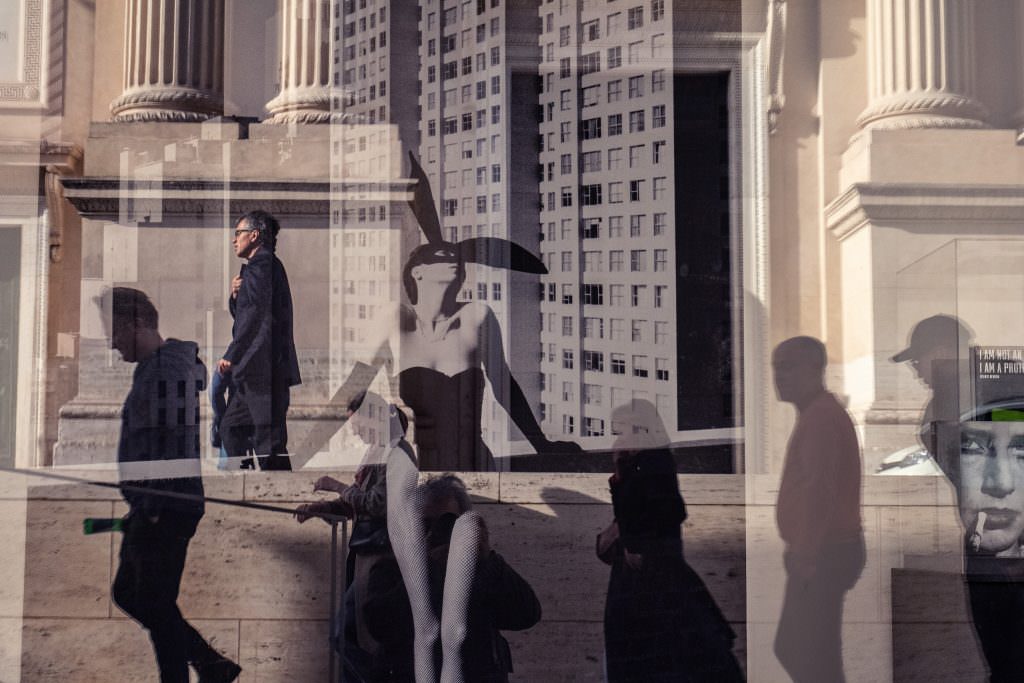Fourth Exibart Street Contest. Discover the Finalists: Diego Mereu
Dear Diego,
first of all, congratulations! You are one of the ten finalists of our fourth Street Photography Competition in the Best Single Photo category, and we are very happy to have this interview with you. Can you tell us something about yourself and about the finalist photo? What was the main source of inspiration for this photo? What did you hope to communicate through this image?
My name is Diego, and I am a photographer-architect from… well, I’m not sure how to define where I’m from. I was born in Cagliari, a seaside city, lived for many years in Genoa, another seaside city, and that’s where I started photographing, while studying architecture, using film cameras to capture architectural subjects as well as events like the famous G8 summit in Genoa. After a long break, I picked up my camera again in 2022, but my mind as a photographer and artist has never stopped capturing images. The finalist photo I presented is a work that explores the complexity of urban scenes through reflections and overlaps between art and architecture, between present and past, and between what is in front of the camera and what is behind it. The main inspiration for this photo was the work of Helmut Newton, street life, and its countless facets that often go unnoticed. In this image, I tried to capture a unique moment where the reflection of a poster of a Newton photograph merges with the everyday reality of the people passing by. The contrast between the image of the model in the poster and the passersby creates a visual narrative that invites the viewer to reflect on the duality of perception and the interaction between imagination and reality. Through this photo, I hoped to convey the beauty and complexity of urban life, showing how our built environments can be reinterpreted through the art of photography. The overlap of different visual elements also symbolizes the overlap of our experiences and perceptions in everyday life.
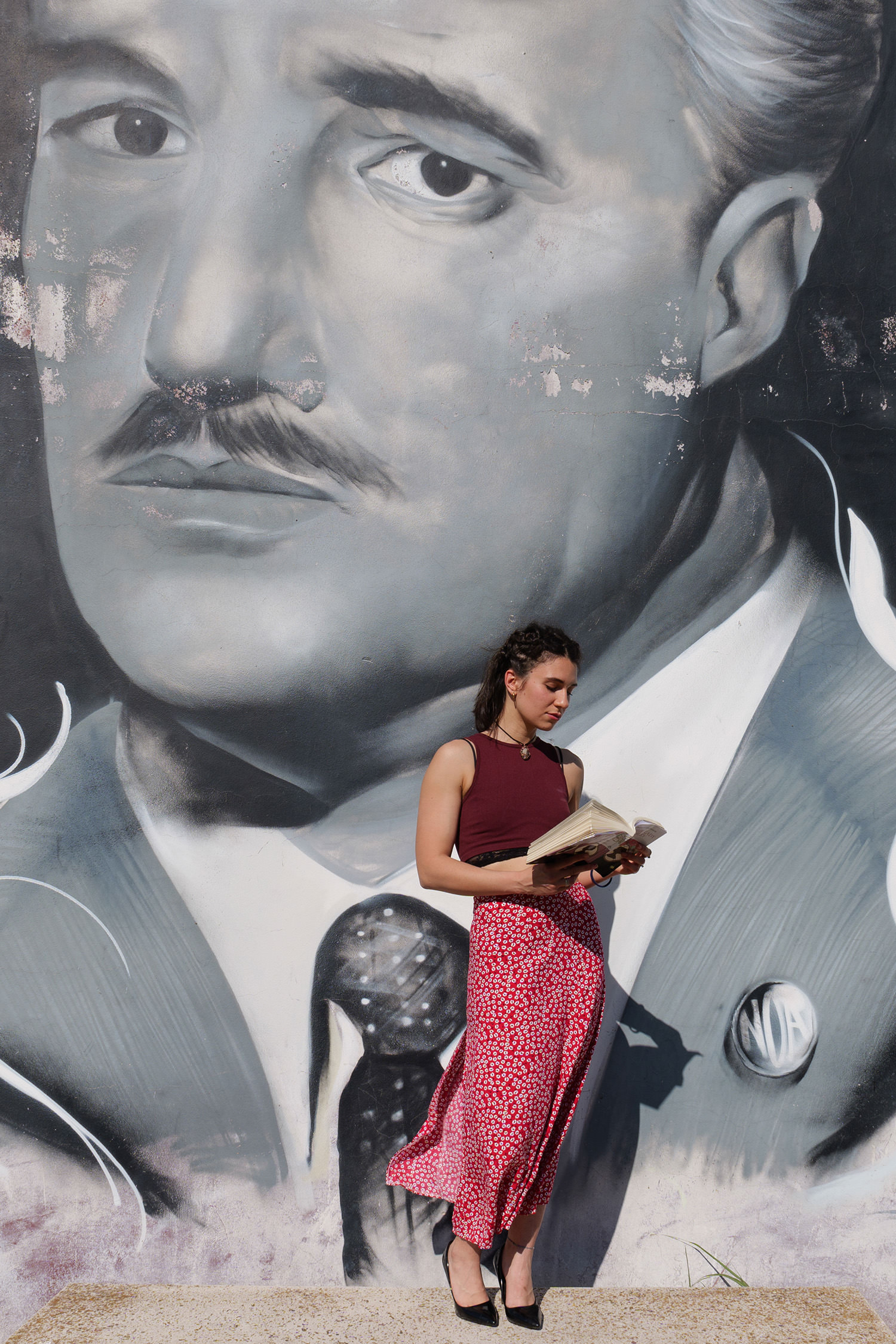
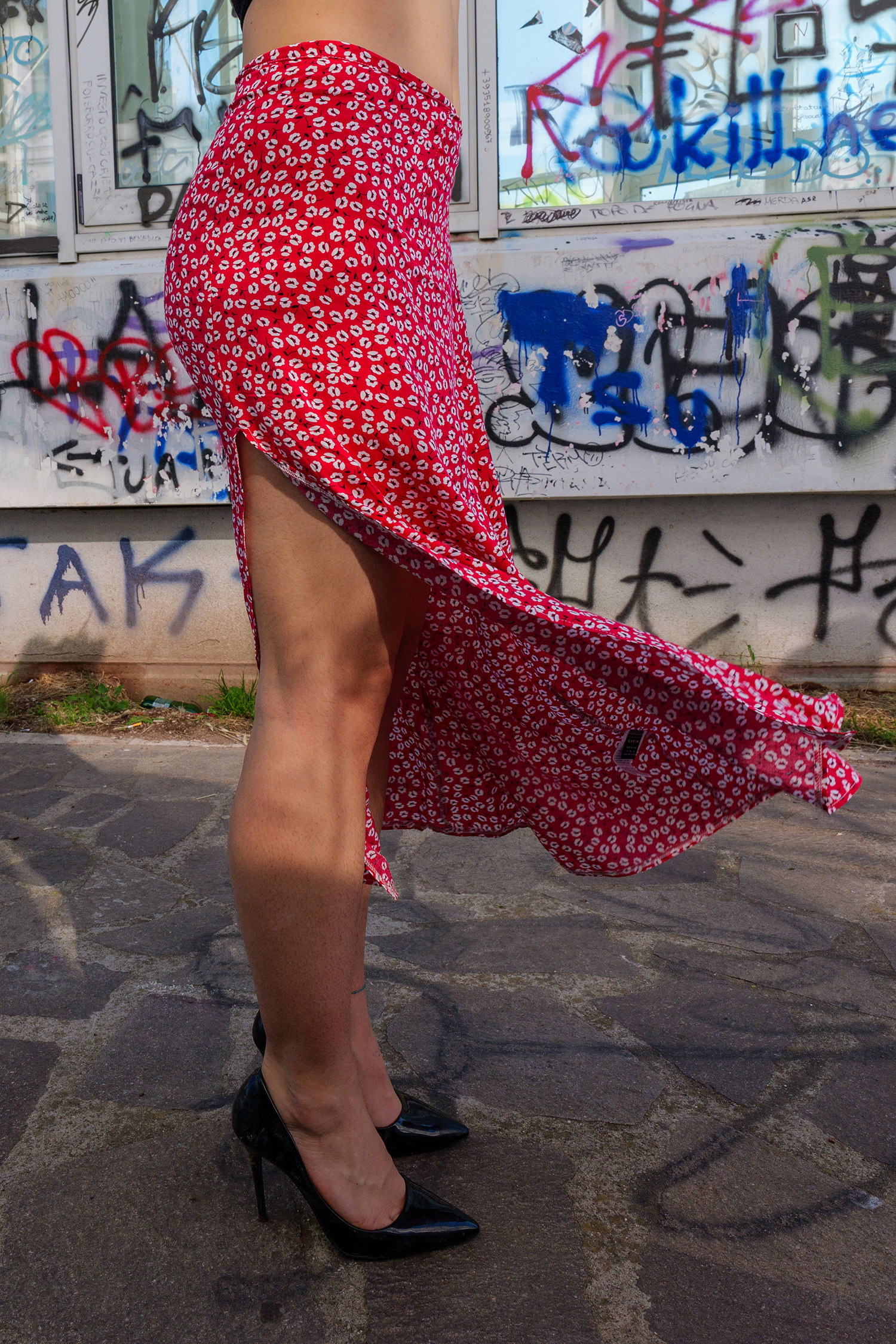
How do you choose the subjects or scenes to photograph?
The subjects and environments in my photographs must first and foremost evoke an emotional response in me. I wouldn’t look at a photograph that doesn’t communicate anything to my soul, nor would I look at something I have already seen, even among my own photographs. What is captured in the image remains there, fixed at that point in history, while we move forward with each passing moment. Reality is infinitely complex, and for our limited minds, it is nothing short of chaotic. While we often tend towards simplification to make the message encapsulated in our images easily readable, ours is ultimately a challenge to simplification. We strive to push ourselves one step further each time, while always trying to avoid crossing the threshold of banality.
Is there a theme or thread you follow when creating a new project?
When choosing my projects, I always consider the stories that might captivate me and be able to sustain my commitment for months or even years. I am currently working on a project about the market and its people on Saturdays in Brescia. Weekly itinerant markets are still a meeting point and a crucial hub in contemporary societies.
Black and white and color. Two different worlds. You decided to go color. Why? Do you ever shoot in B&w?
In reality, the sensors of modern cameras capture images in color, so I always try to shoot with the colors in mind that capture the essence of that particular portion of reality I am framing. I also shoot in black and white when I want to delve deeply into the truth of that portion of reality for which color would be an unnecessary distraction.
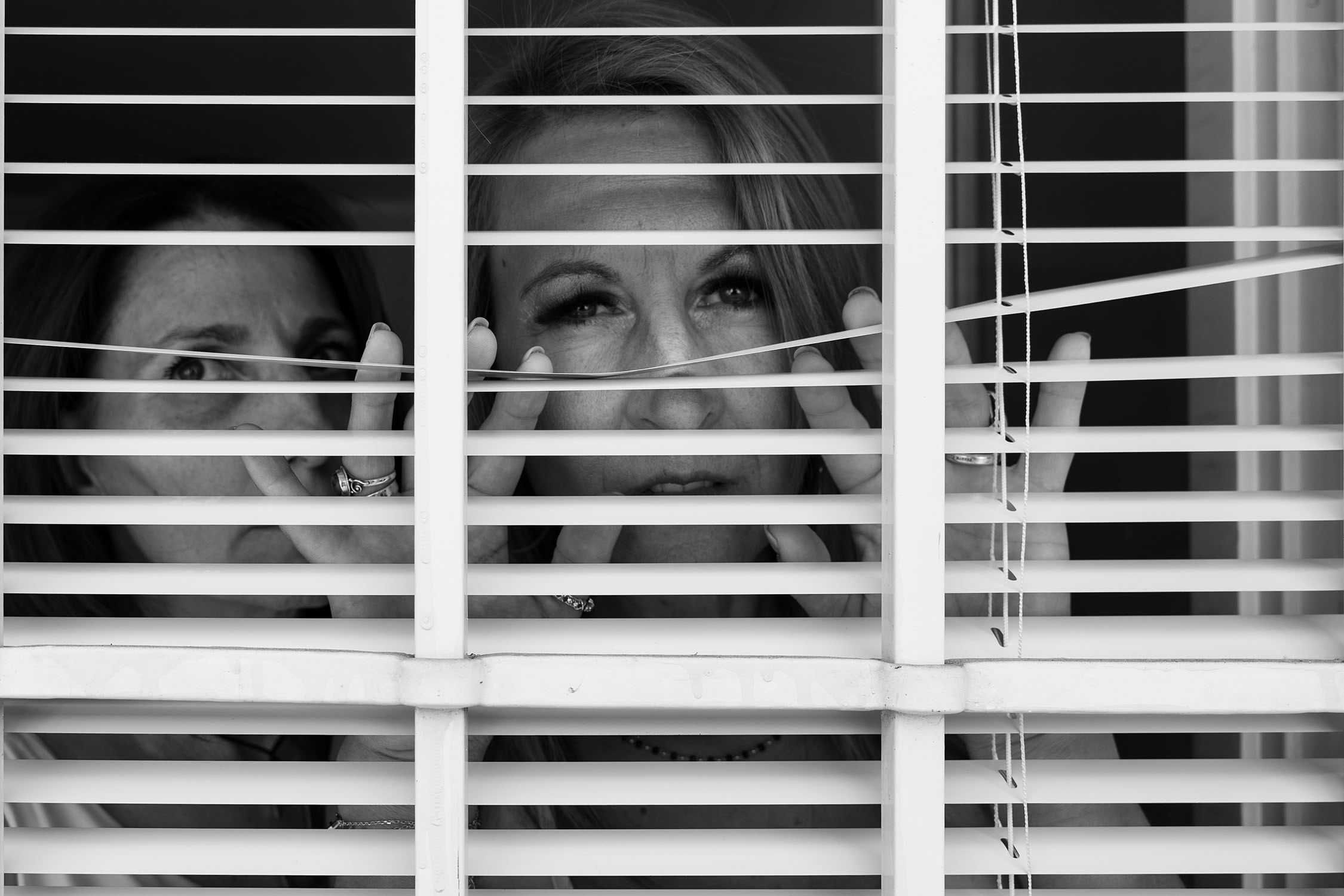
Many of your images capture everyday details that often go unnoticed. How do you decide which details to include and which to leave out?
I go out on the streets with an open mind, eager to be influenced by what happens around me, and sometimes the magic of a shot that moves me occurs. The details that catch my attention while I walk down the street or participate in an event are those that would attract my childhood self; the curiosity of children is our most profound and subtle weapon, capable of making us explore the exciting side of life. It can take us back in time, opening us up to emotions we had forgotten, except for those who have always remained children.
Can you describe some of the photographic techniques you use to capture the atmosphere and moment in your photographs?
The first thing I do when I go out on the street is evaluate the light around me. The general light of the field of action is important when shooting outdoors. I preset the camera according to the sky; if it’s clear, I will look for deep shadows and strong contrasts, seeking characters who can fill the frame with their story to tell. In this case, the frame will have areas of light, others of shadow, down to black, in the final image. If the sky is cloudy, I prefer frames where light is present throughout the shot, and the action from looks or movements can lead the viewer’s gaze from one corner of the frame to the other.
“I am currently interested in photography with cinematic aspects, aiming to evoke emotions through the artistry of carefully constructed gestures and lighting.”
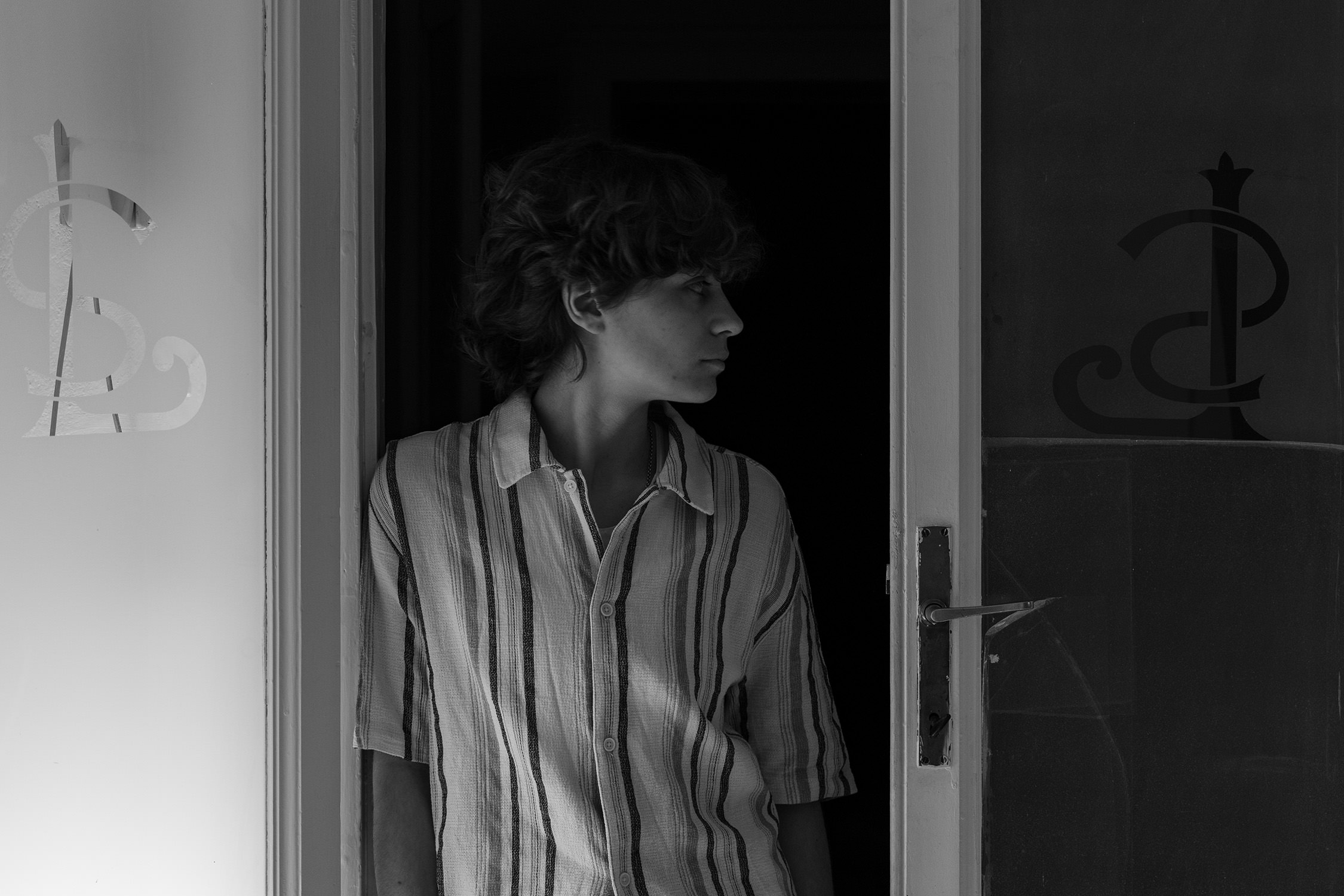
How would you define your photographic style?
My photographic style can be described as variable, emotional, and sensitive to the weather. I am always on the lookout for the ironic aspect, if possible, the unusual or the surreal, which I strive to combine with elements of everyday life. My approach is highly dependent on my mood and the environment around me; if I don’t find something that strikes me as unique or thought-provoking, I don’t press the shutter. I seek to capture those fleeting moments where the ordinary intersects with the extraordinary, creating images that tell a story and evoke an emotional response. This constant search for the unexpected keeps my work dynamic and ensures that each photograph carries a piece of my ever-changing perspective.
Have you ever studied at a photography school or are you a self-taught artist?
I have taken various courses and workshops, but fundamentally I am self-taught. My background as an architect, studying perspective, and art studies are helpful in developing a visual culture and an attitude towards framing compositions.
Who are the Masters of Photography who inspired you most in your photographic works?
Henri Cartier-Bresson, Joel Meyerowitz, Alex Webb, and especially the work of William Klein and Garry Winogrand—these two great masters have greatly influenced my street photography. Lately, I’ve been drawn to cinematic photography, studying the works of Gregory Crewdson and Erwin Olaf.
Do you ever do Street Photography with your smartphone?
Yes, I do street photography with my smartphone for particular situations, but fundamentally, I prefer using a camera.
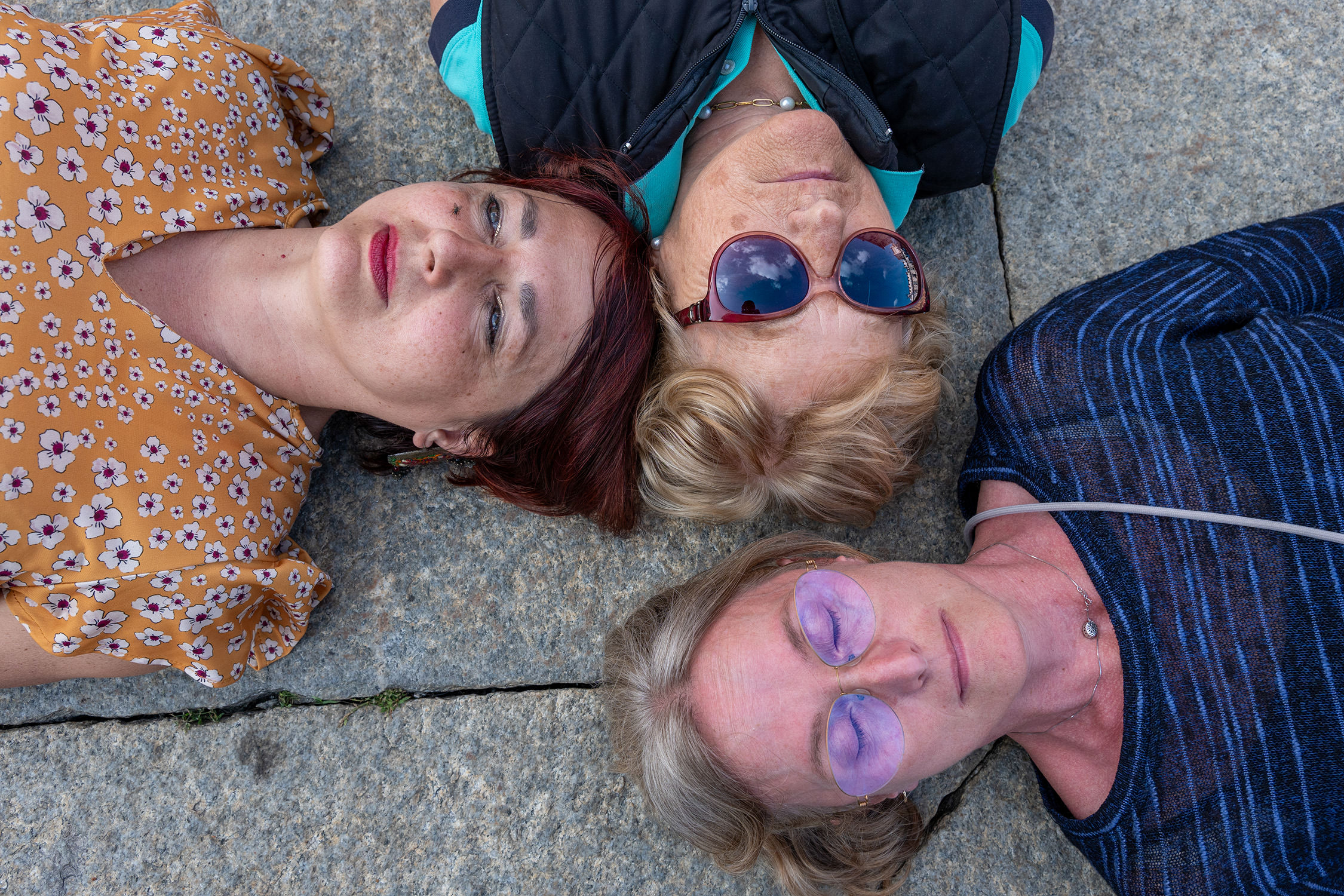
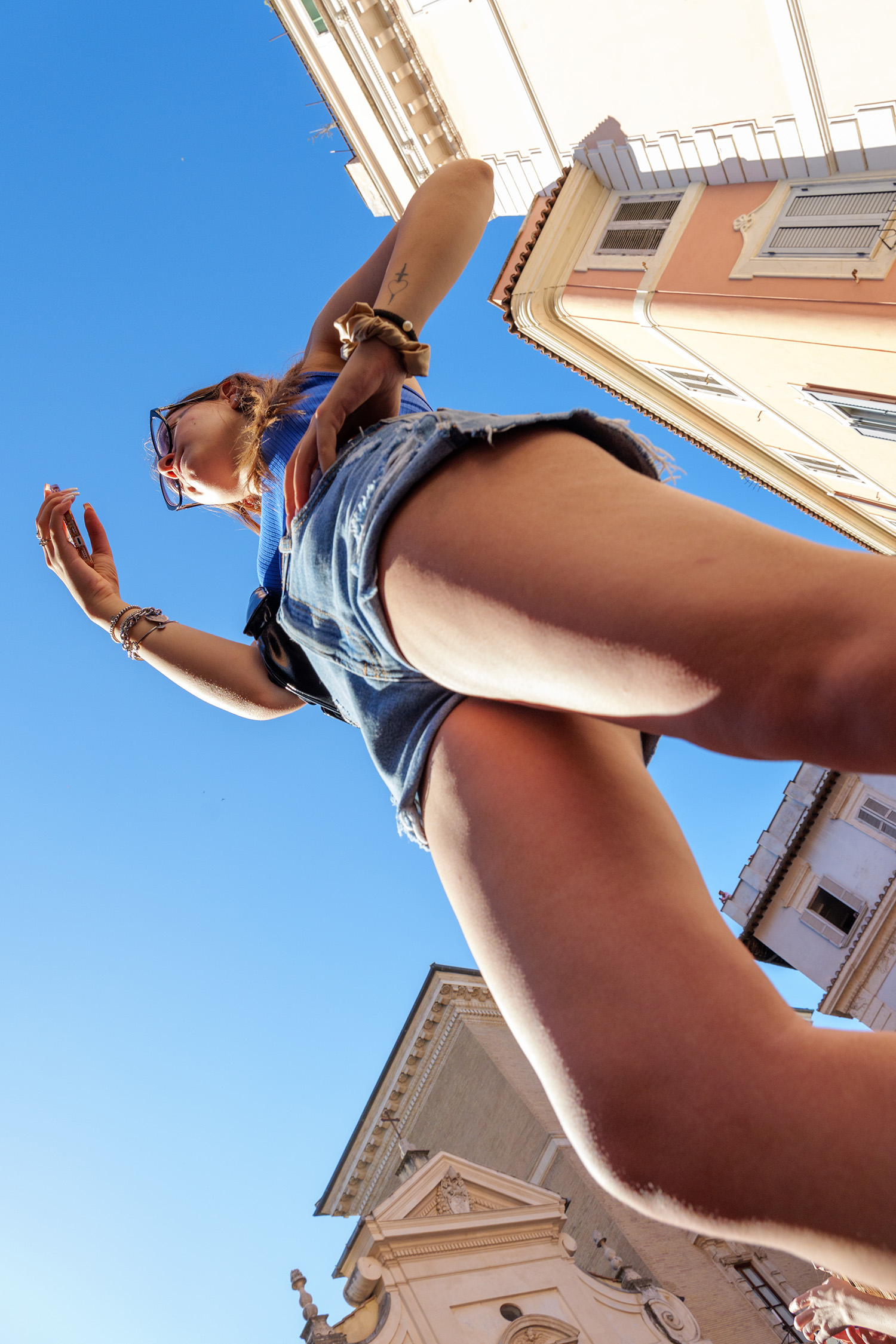
Analog and digital photography. Do you see these as alternatives to one another or the same thing?
Analog and digital photography are alternative tools that offer different nuances and are used to tell stories with different narratives. Color captures the pure moment, gestures, and interactions, while black and white conveys people’s moods and emotions.
Do you think Street Photography has a more documentary or more artistic value?
Street photography has artistic value in the present, but it only acquires significant documentary value in the future through a succession of images taken in the same places but at different times. This is very important for culture and society.
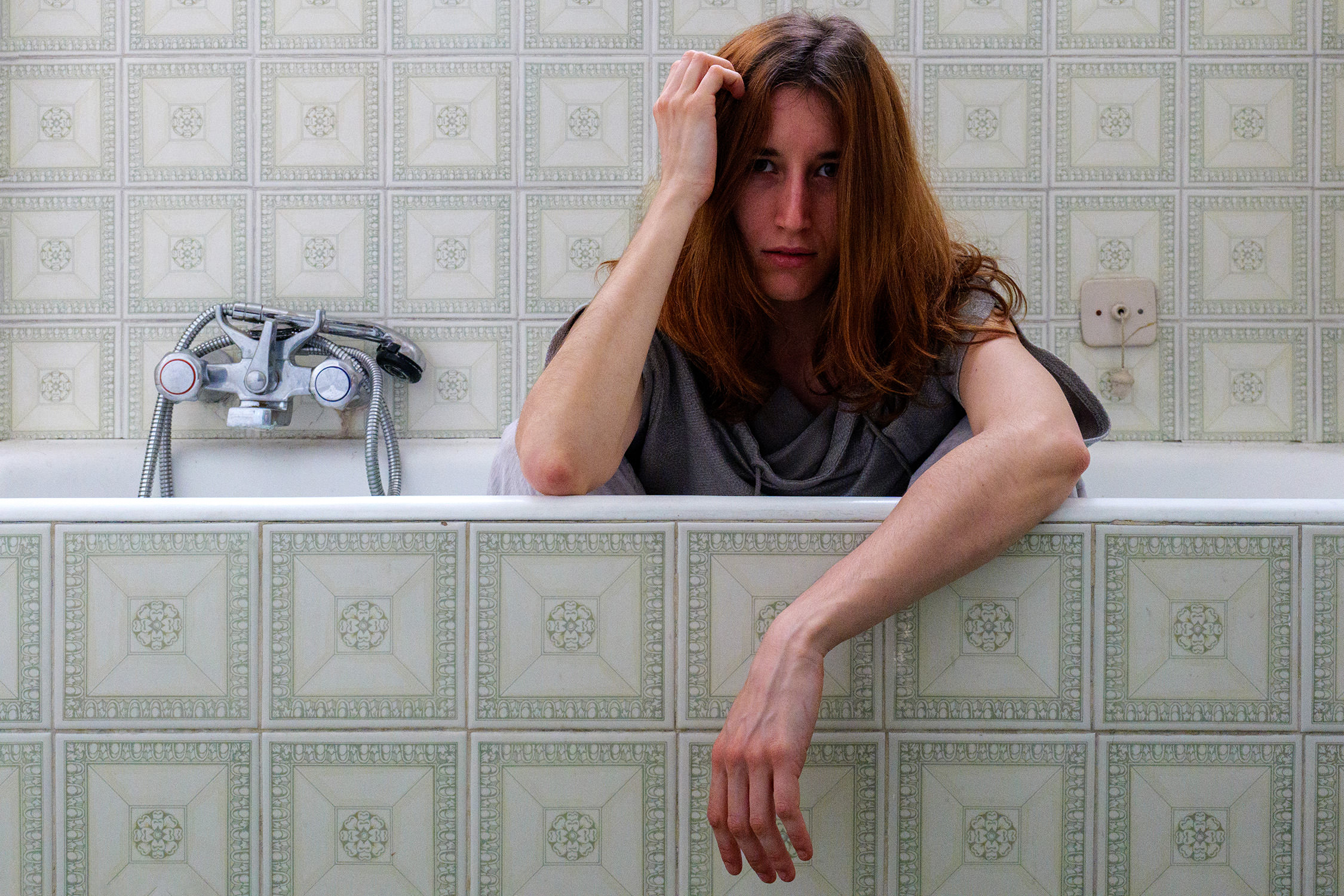
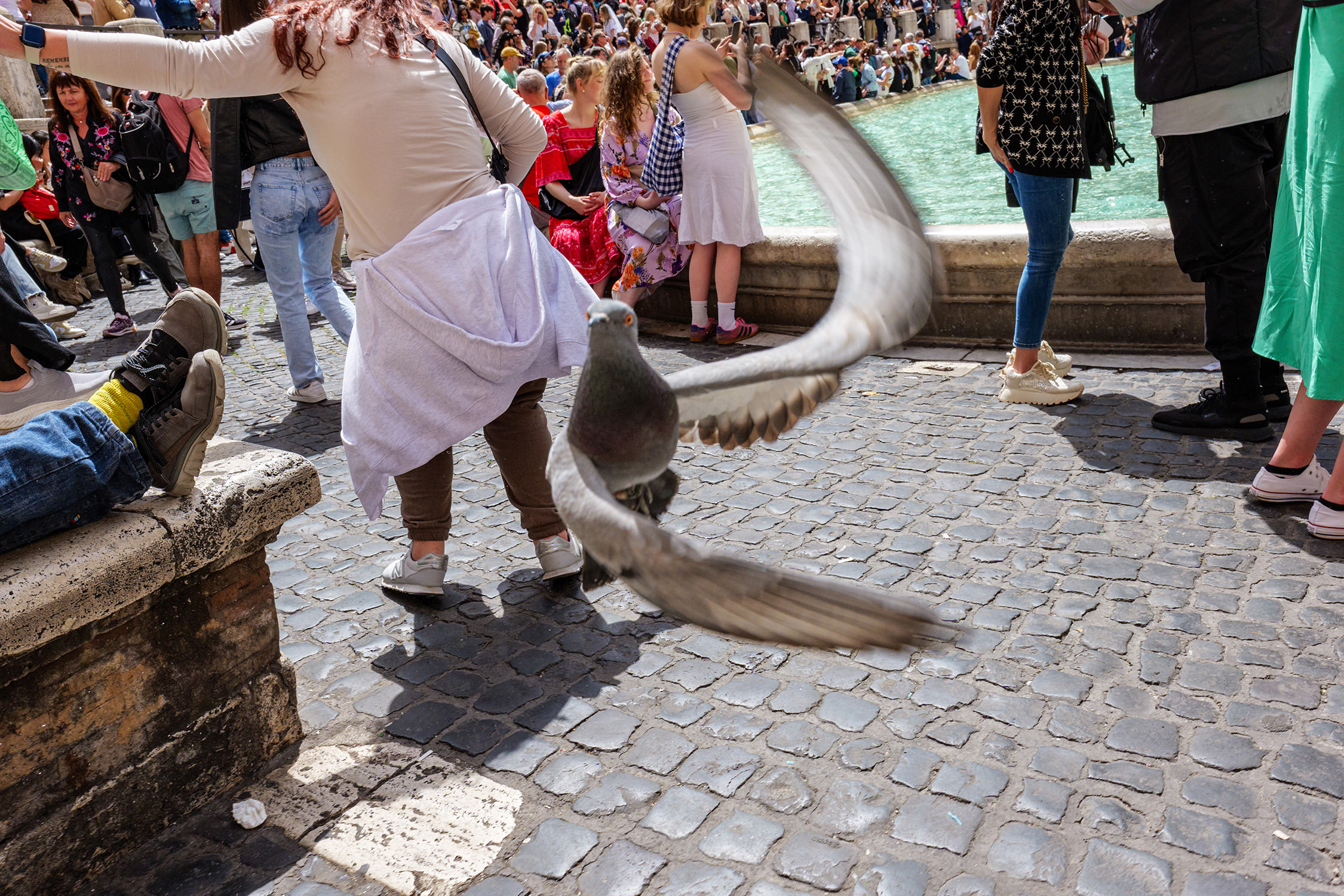
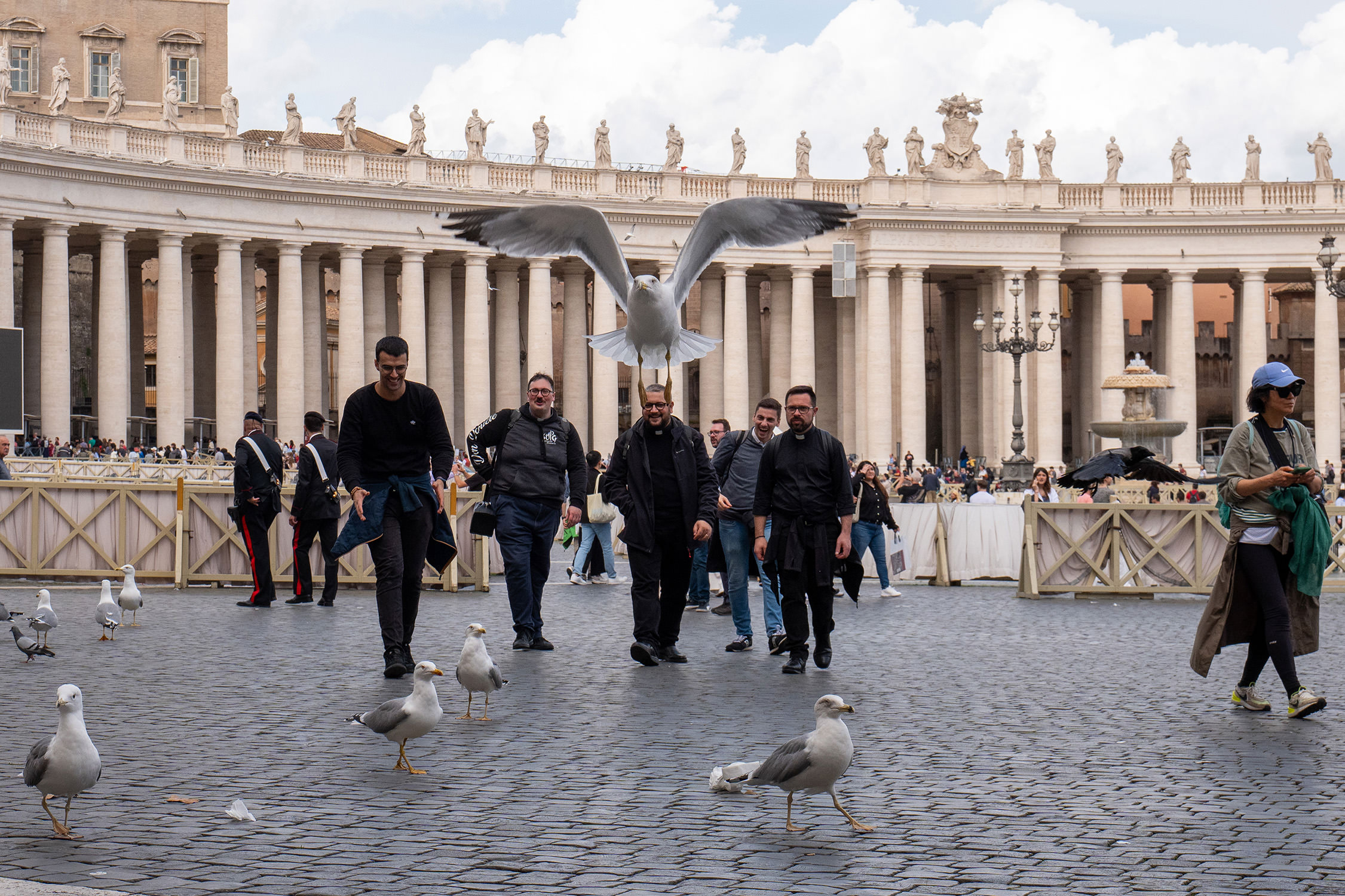
Do you think there are ethical limits in street photography? Do you think it’s possible to shoot everything and everybody? What is your approach in street photography?
My approach to street photography is with a lot of respect. There are ethical limits in photography, but if street photography is approached with seriousness and sensitivity towards people, everything can be photographed. The dignity of people is paramount, and by preserving this, there is nothing that cannot be photographed.
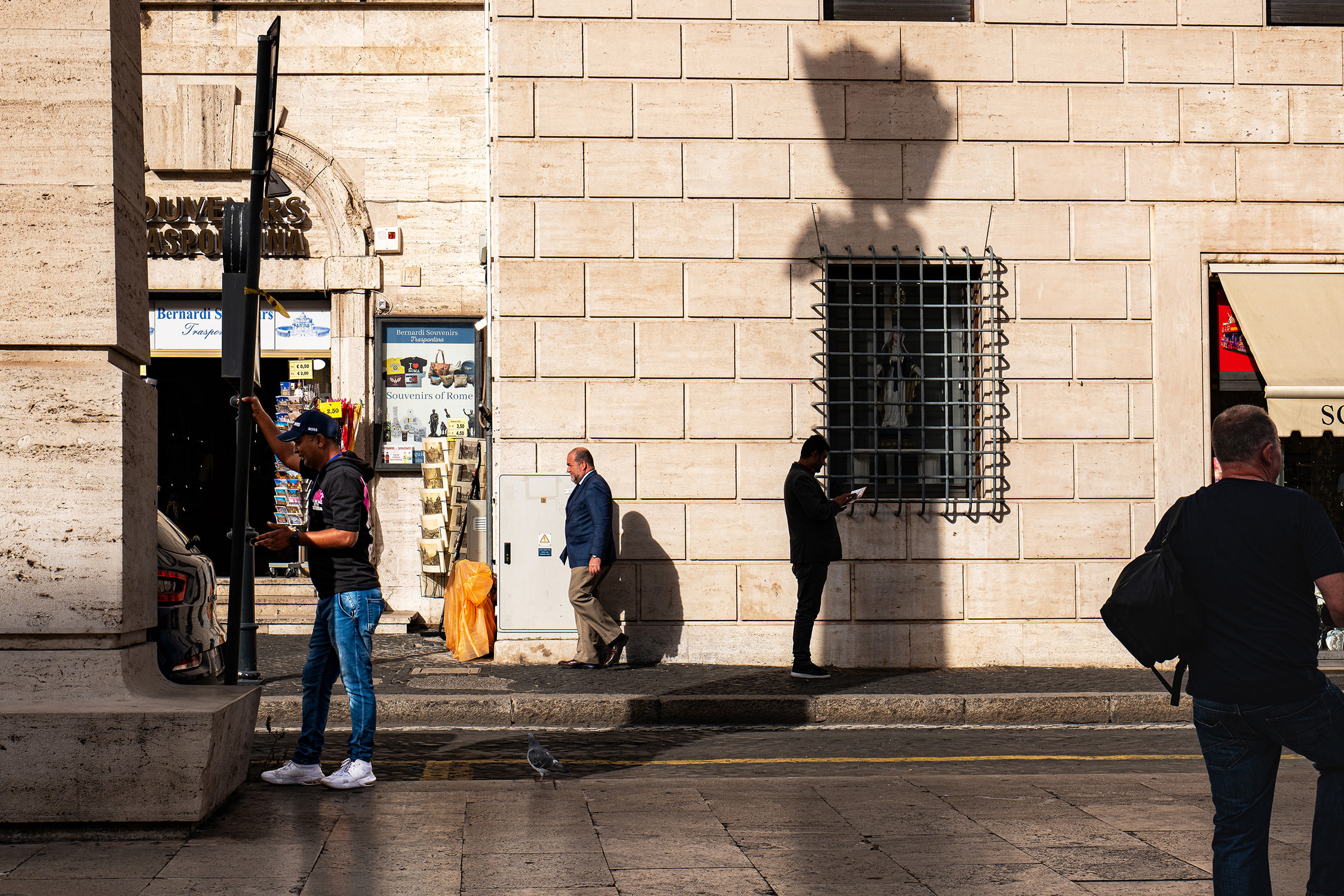
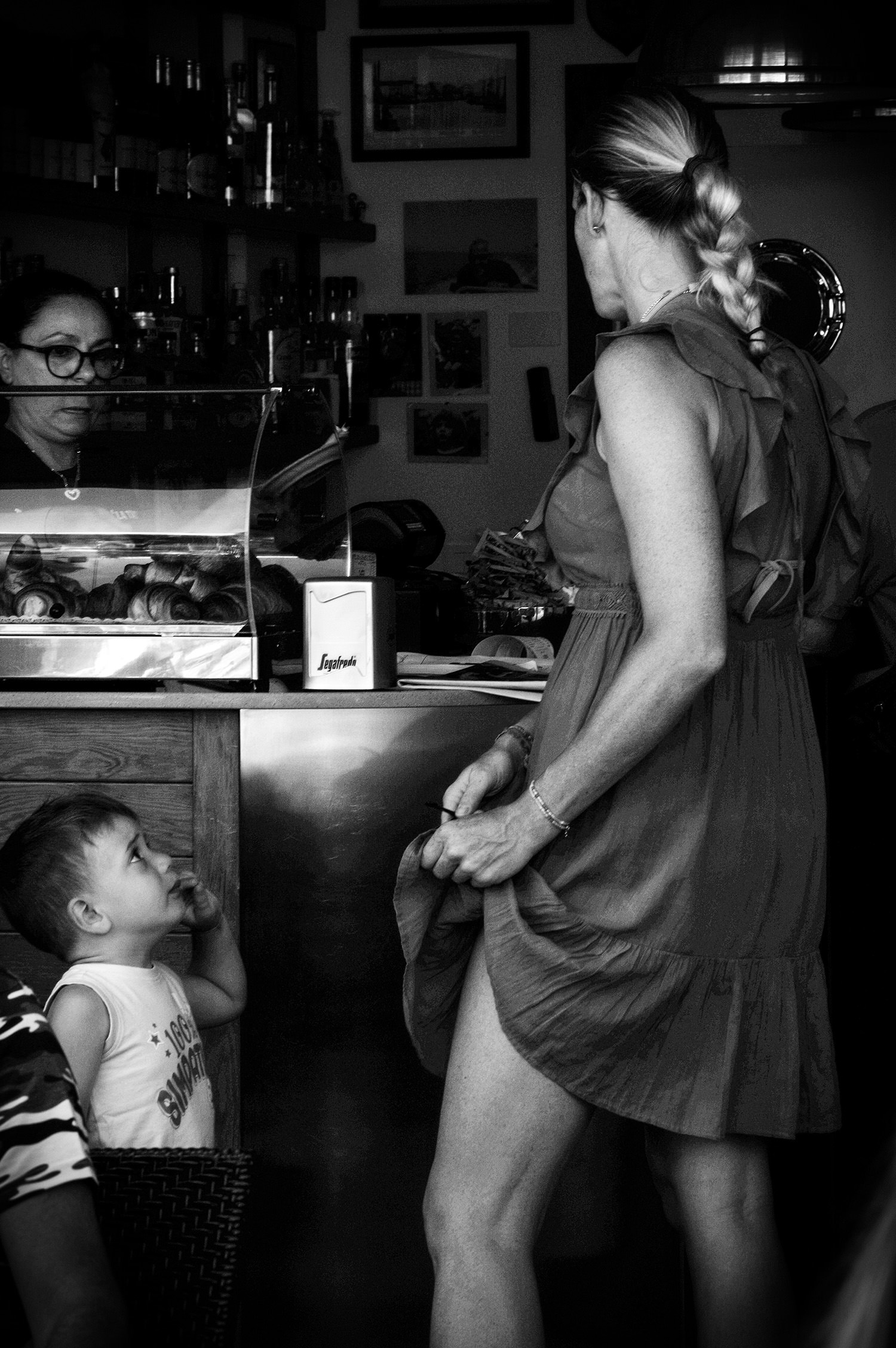
What kind of equipment do you use and what role, in your opinion, does equipment have in street photography?
I use a full-frame Lumix S5II, not exactly a small camera, but my goal is not to go unnoticed. Instead, it is to compose the photograph with the maximum expressive potential. The role of equipment in street photography varies depending on the photographer’s level of photographic awareness. At the beginning of one’s experience, having high-performance equipment helps achieve shots that satisfy our desire to observe the world in its spontaneity. However, as one gains experience, it becomes clear that having the perfect camera for the street is not the most important element. Far more crucial is having an eye for the scene and waiting for the right actors for that particular scenario, along with the attitude to marvel at the most diverse things passing before us. Clearly, having a comfortable camera helps ensure that no shot is missed because wonder is always just around the corner.
If you had to choose one lens that you would have to be using for the rest of your life, which one would that be and why?
Perhaps, if I had to choose, I would opt for a 35mm lens. It is a good lens capable of still telling stories about people from different perspectives, even up to portraiture.
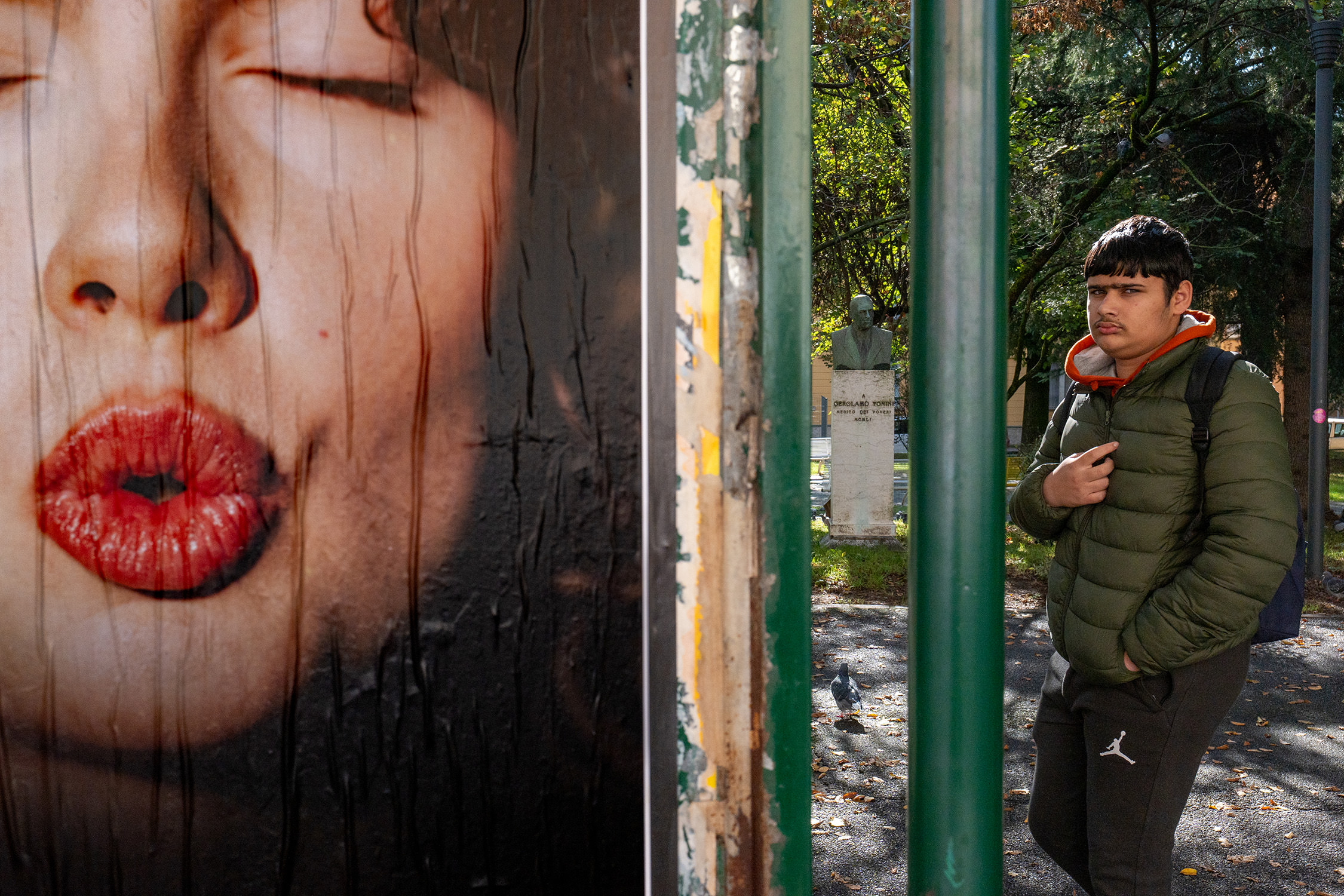
“I go out on the streets with an open mind, eager to be influenced by what happens around me, and sometimes the magic of a shot that moves me occurs.”
After shooting, what actions do you take in terms of processing and editing?
Simply a development that tends to enhance either the lights or the shadows, or to make a face or a gesture more readable. Light editing to try not to distort the very nature of the moment.
Do you have new projects or themes in mind that you would like to explore in the future?
I am currently interested in photography with cinematic aspects, aiming to evoke emotions through the artistry of carefully constructed gestures and lighting. On the street photography side, I am focused on street portraits, seeking to create new connections with people’s eyes.
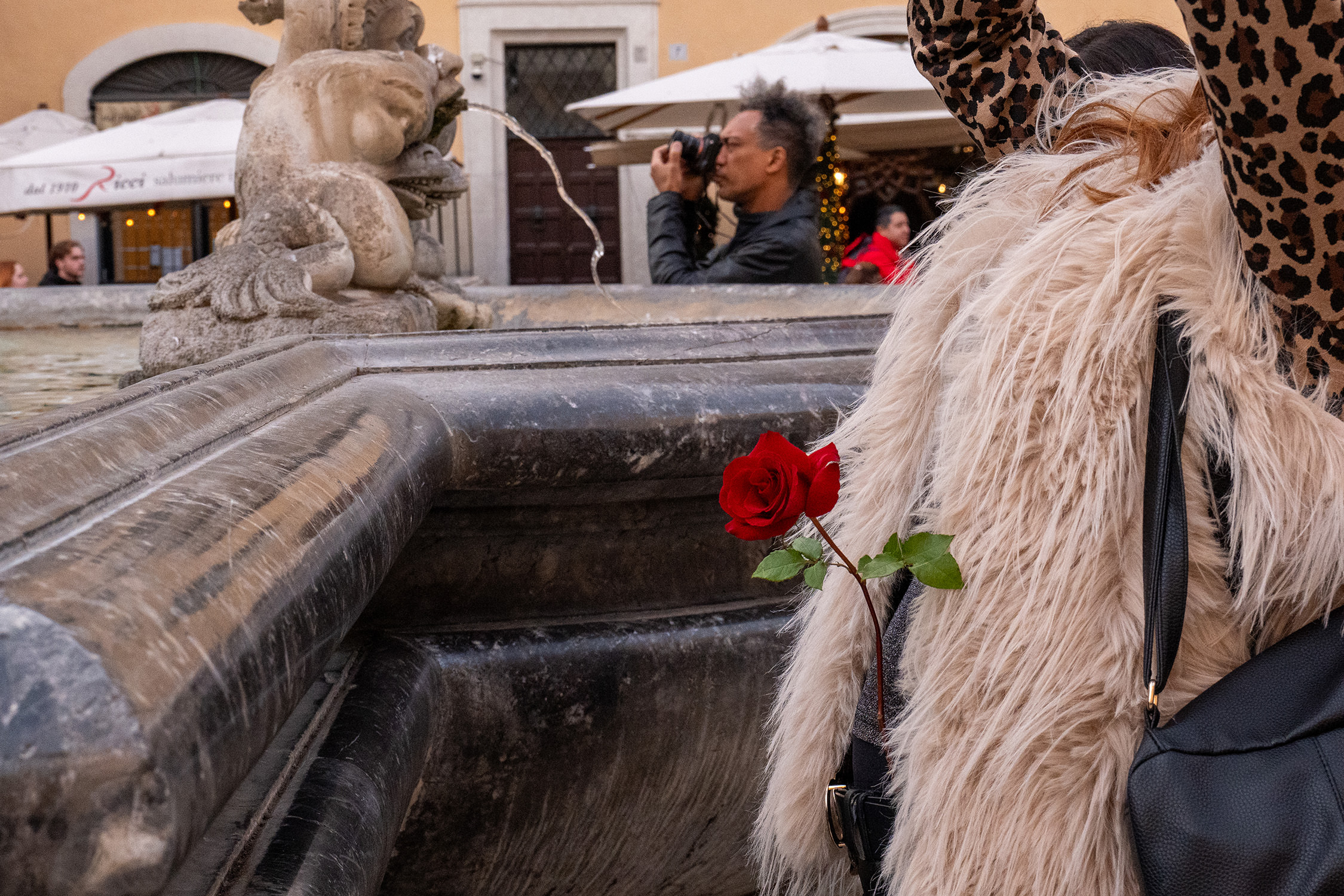
How do you see the evolution of your photographic work?
Exhausting, but constant. I always strive to be myself and try to increasingly engage the subjects in front of me. In the end, love for what you do shows in the results.
Which are your favorite photography books?
Gregory Crewdson: “Eveningside”, Paolo Pellegrin: “l’orizzonte degli eventi”, Alex Webb: “The Suffering of Light”, William Klein: “New York 1954,55”, Garry Winogrand: “Women Are Beautiful”, Joel Meyerowitz: “Bystander”, Stephen McLaren – Matt Stuart: “Reclaim the Street”, Sophie Howarth – Stephen McLaren: “Street Photography Now”.
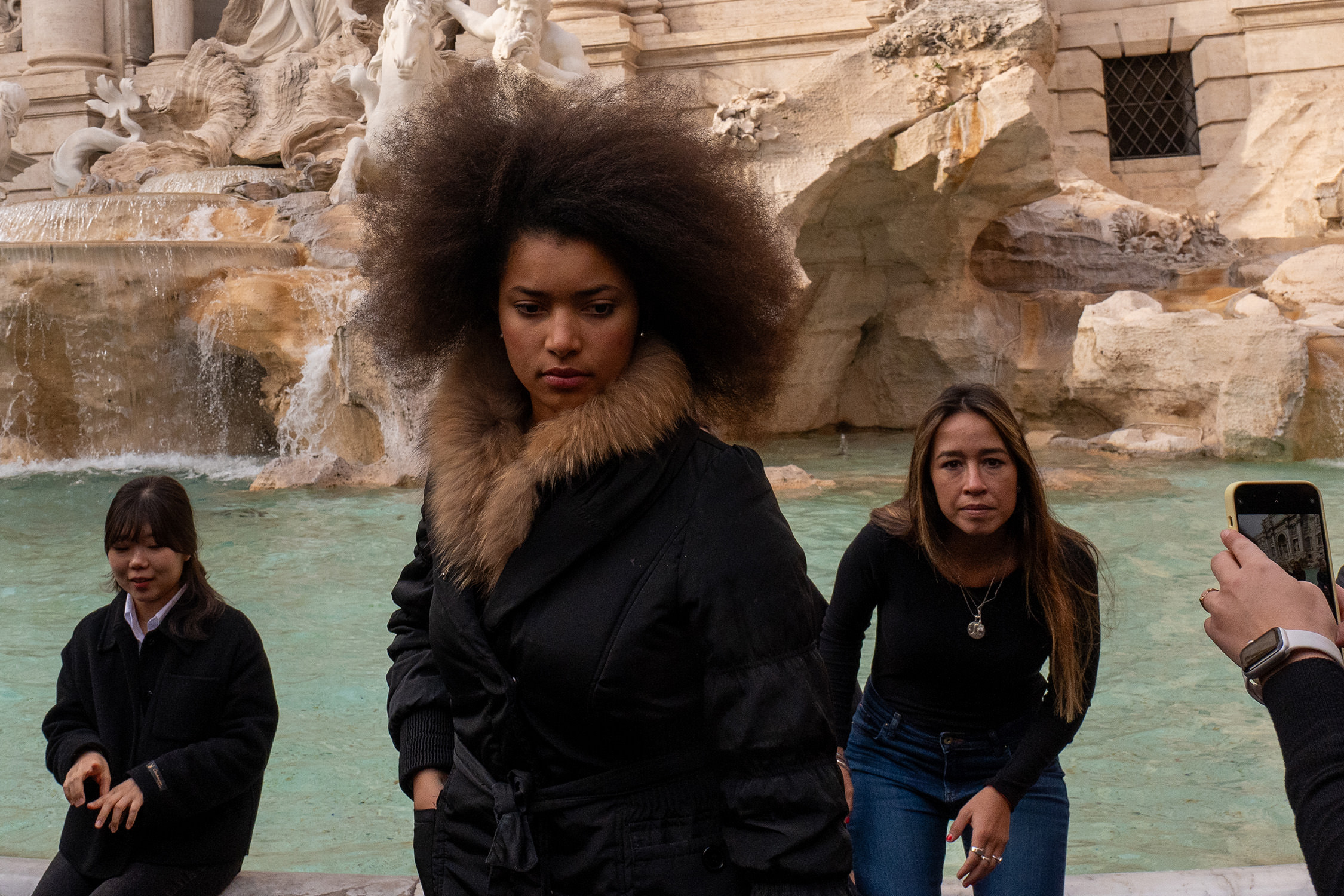
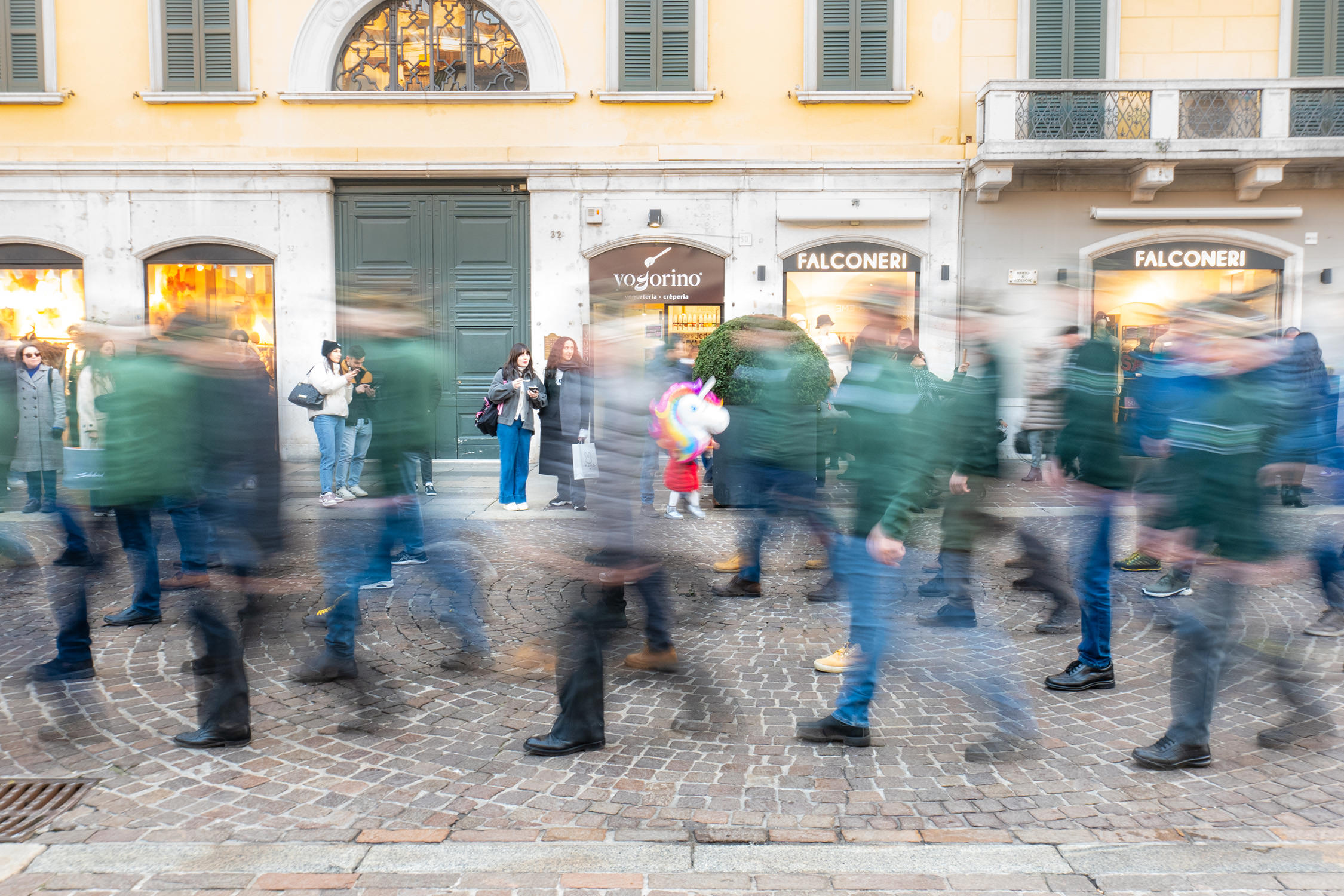
Is there a country or a city that you like to photograph more than others?
I like photographing Rome. I love chaotic cities and would probably enjoy being in Naples, but I would also like to photograph New York, Hong Kong, Tokyo, and Singapore.
What advice would you give to someone who is starting to do street photography and wants to develop a unique and personal style?
Observe: photography books, exhibitions, films, and then: a pair of comfortable shoes and walk a lot and slowly on the streets, observe again, and only then start shooting.
Thank you!
DIEGO BIOGRAPHY
Born in 1973 in Sardinia and raised near Cagliari, I spent 18 years in Genoa studying architecture. Photography, ingrained since childhood by my father, ignited my journey. The G8 in Genoa was pivotal, propelling me into street and documentary photography. Inspired by Webb, Klein, and Crewdson, I explore life’s complexities in street markets like Brescia’s Saturday market.
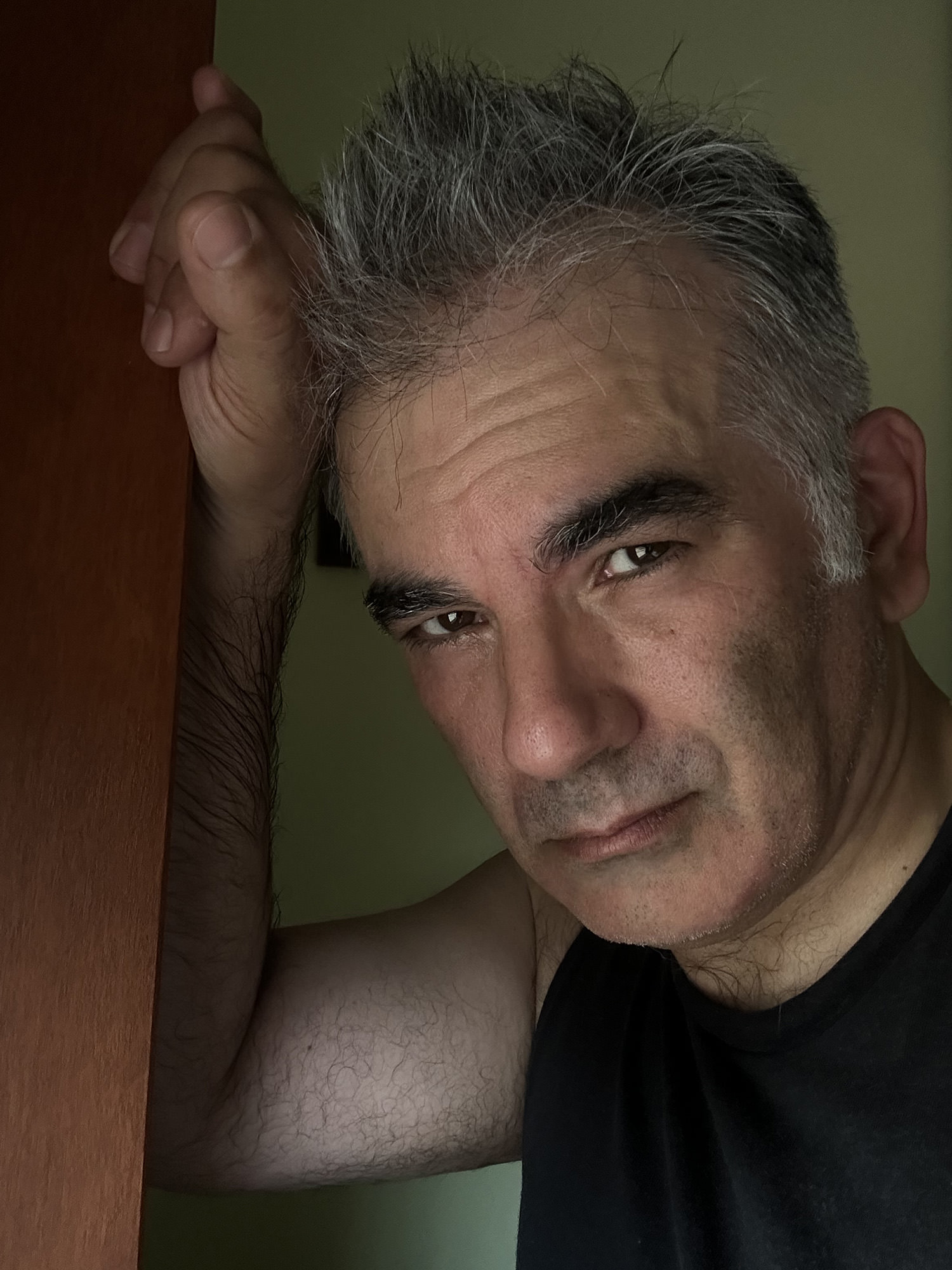
Diego Links:
Instagram: https://www.instagram.com/architettovolante/

